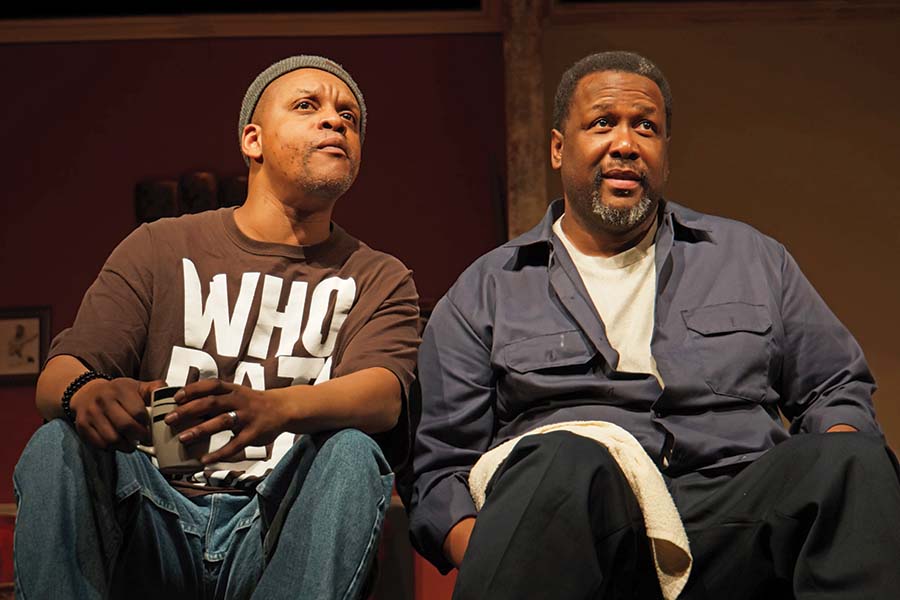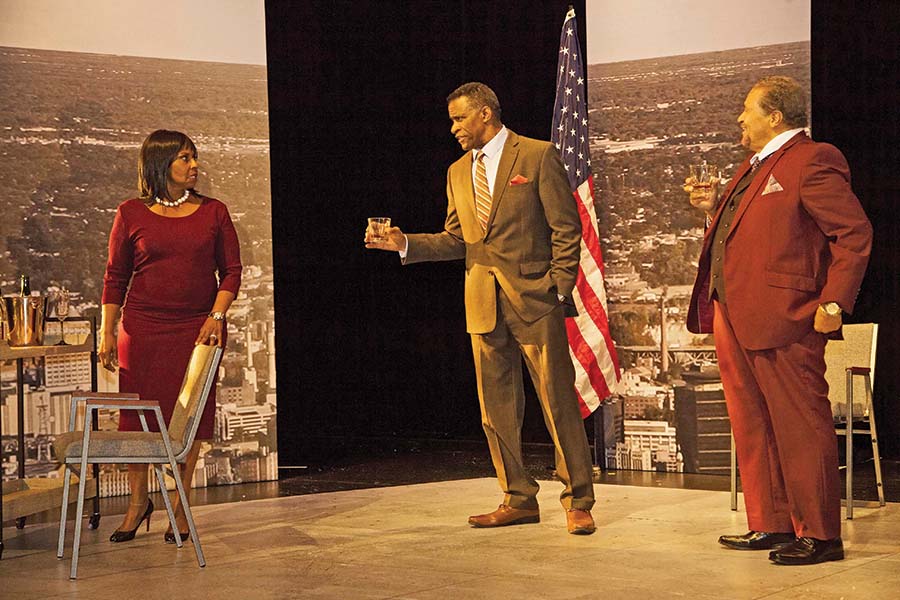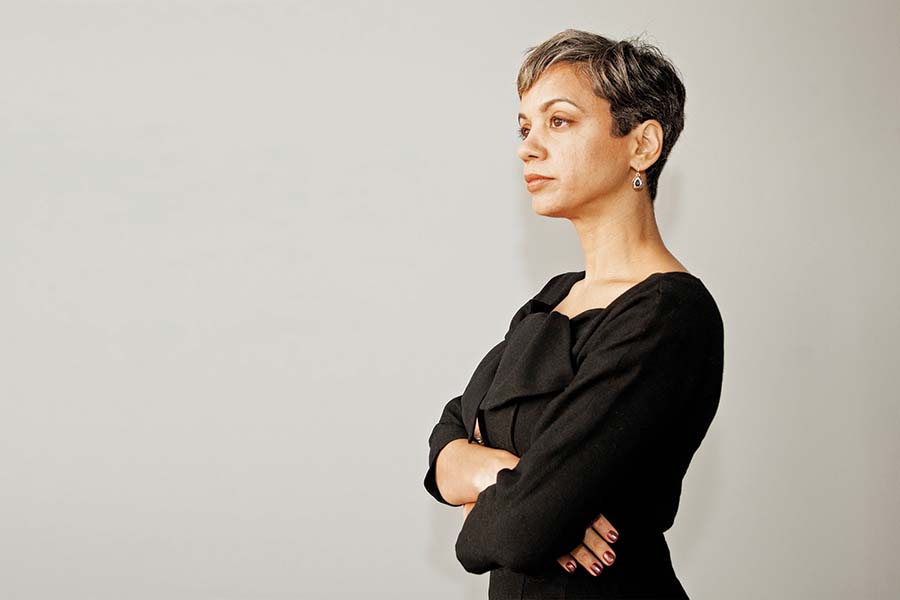As a teenager in New Orleans, Wendell Pierce was already acting locally and thinking nationally. He read Black Theatre Alliance newspapers and dreamed about far-off places—places like the Jubilee Theatre in Texas, the Negro Ensemble Company and New Federal Theatre in Manhattan, and especially the Billie Holiday Theatre in Brooklyn.
When Pierce later moved to Brooklyn at the dawn of his acting career, he went to see shows at the Billie, as the venerable venue in Bedford-Stuyvesant is sometimes called. In 2015, when he was asked to perform there—in Brothers From the Bottom, a play about gentrification in New Orleans—Pierce, by then a TV star thanks to “The Wire” and “Treme,” leaped at the chance.
“It’s important to me to find time in my schedule to commit to theatre, and I was attracted to the play,” says Pierce, who had saved those old BTA newspapers from his youth until they were destroyed in Hurricane Katrina. “But this was a deliberate decision to contribute to the Billie Holiday Theatre, where I had always wanted to work.”
Pierce returned to the Billie last February for a three-man production of 12 Angry Men—not the much-performed stage warhorse but an adaptation of real-life stories about police profiling, co-starring Roger Robinson and directed by Stephen McKinley Henderson. The previous fall, a reading of the play featured the diverse talents of John Amos, Dule Hill, Roscoe Orman, Jason Dirden, and Russell Hornsby.
“I can attest to the importance of the Billie Holiday Theatre as a national treasure,” says Amos, pointing to the platform it provided over two decades ago for his solo show Halley’s Comet, which led to years of national and international performances. “The theatre has midwifed the careers of numerous playwrights, directors, and actors and provided a training ground for those young folks in our community who aspire to a career as stage technicians, in lighting, in sound.”

2015 production of “Brothers From the Bottom.” (Photo by Helen L. Collen)
Indeed, the roster of BHT alumni since its 1972 founding by the Bedford-Stuyvesant Restoration Corporation includes such names as Samuel L. Jackson, Debbie Allen, Bill Cobbs, Ebony JoAnn, Dick Gregory, Ralph Carter, Smokey Robinson, Samm-Art Williams, Weldon Irvine, and John Henry Redwood. As Amos puts it, “It is imperative that the Billie Holiday Theatre survive and thrive in these perilous times.”
But despite its glorious past, until recently the Billie looked like it might not have a future. Bed-Stuy has been changing, theatre audiences have proved tricky to maintain, and funding from public and private sources is increasingly hard to come by for any nonprofit theatre, much less an African-American one in Brooklyn.
Marjorie Moon became artistic director of BHT in 1973, and later executive director in 2013, when she handed over the reins to Jackie Alexander. Alexander, a playwright and director who had contributed to the theatre for years and who authored Brothers From the Bottom, knew the theatre could no longer rely exclusively on state funding. So he roped in a grant from the Mellon Foundation and began a grassroots fundraising campaign.
“I was trying to find different strings of revenue,” Alexander says. “I also wanted to focus on widening our audience. We had relied for years on a devoted audience base of different church groups, but that was dwindling as time passed. My friends in the neighborhood didn’t even know the theatre was here! We needed to raise our profile.”
Getting a star like Pierce for Brothers helped, but putting the show up also reminded Alexander that he wanted to write—something he’d barely been able to do since taking over the artistic directorship. With the theatre requiring a major renovation, the top job would require a full set of administrative skills, and Alexander decided to move on. His departure presented the theatre with a challenge, but also an opportunity.
That’s when Wayne Winborne, a Bed-Stuy Restoration Corp. board member and chair of the theatre’s board, led the move to combine all the organization’s arts offerings—of which the Billie is the best known and the largest but which also include dance and music residency programs, an art gallery, and youth programs—into a new entity, the Center for Arts & Culture. What Winborne and his board were looking for to lead the transition was, in his words, “a rock star.”
“We were searching for someone with that rare combination of artistic vision and a track record of development achievement, within the context of deep engagement with the community,” Winborne elaborates. “The new leader was going to need administrative skills to manage all this and be hands-on with the theatre’s renovation as well.”

The sought-after rock star arrived right on schedule, shortly before Brothers From the Bottom debuted, when in 2015 the board created the new role of executive director of the Center for Arts & Culture specifically for Indira Etwaroo. She had been the founding executive producer of “NPR Presents,” and before that the founding executive producer of WNYC’s Greene Performance Space in Manhattan, where she had produced the recordings of August Wilson’s American Century Cycle, among other projects. She had local credibility, having worked at the Brooklyn Academy of Music, and theatrical cred, too: a Fulbright Scholar, Etwaroo studied and performed in theatre and earned a Ph.D. in dance and cultural studies.
“This was a pretty incredible opportunity to take these different artistic silos and bring them all under one umbrella,” says Etwaroo. Relentlessly optimistic, she sees the theatre’s challenges (“The revenue streams are not as robust as they need to be,” she concedes) as a glass half full, effusing, “The Billie is poised for growth.”
The hiring of Etwaroo “not only created a sigh of relief but made people excited about what comes next,” Winborne avows. “Her reputation and track record helped with funders.”
Longtime artistic director Moon, who seems happy to have the theatre finally getting more resources, says she “trusts the hands the theatre is in, and I’m excited to be involved in senior programs and outreach to other groups.” Etwaroo says the long history that Moon created at the Billie provides a firm foundation for the future; she also praises outgoing leader Alexander as “an incredible bridge” from the Moon era to hers.
The tasks before Etwaroo are formidable. Ticket sales have carried the theatre for years, and foundation support “has not been very robust,” so she is looking to build on both private and government grants, along with developing an individual donor base.
“Smashing the silos” to create an overall cultural center for the community will be critical in attracting foundations, she says. “The synergy between dance and art and the youth academy and the theatre will also allow us to be stronger, sharing space and human resources. Part of the new structure is to bring all our assets around one table.”
She also plans to further build the center’s portfolio. For example, she has brought under her umbrella the Frank Silvera Writers Workshop, which has been based in Harlem for a quarter-century and which would give the Billie “a direct pipeline for new works.”
But progress, she cautions, will be gradual: “One donor, one funder, one sponsor, one ticket at a time. Those donors will become ambassadors, talking about the theatre. That’s one thing we have to do better—tell the Billie’s story.”
Etwaroo has been overseeing the $4.1 million renovation of the theatre, which includes new lighting and audio equipment, new dressing rooms, a deeper, wider stage, and a raised floor; the stage, she says, had been “prohibitively high.” The theatre was due to reopen in November, but ran into various delays and has been pushed back until February or possibly even March. Etwaroo has held off booking an opening show because of the uncertainty. The goal is to launch this spring as part of this year’s 50th anniversary of Restoration Plaza.
In the meantime, the Billie has mounted productions like 12 Angry Men in downtown Brooklyn and used its outdoor plazas to stage excerpts from August Wilson’s plays as a way to draw in the community. Etwaroo would like to bring Shakespeare to the plazas too.
“We want to start a dialogue with the community,” Etwaroo says, even as she acknowledges that the community itself is something of a moving target as gentrification encroaches on Bed-Stuy. Still, she says, “If black lives matter, then black art matters. Our job is to carry the torch forward.”
Etwaroo is looking ahead, negotiating with potential funders for a national tour of 12 Angry Men. But she is moving slowly in planning specifics for Restoration Plaza and the Billie, quietly researching various partnerships without committing too much too soon.
“I’m trying not to add cement too quickly,” she says of her reluctance to rush into anything. “We only want to do stuff that is meaningful and has sustainability. I’ve had to launch Greene Space and ‘NPR Presents,’ and I’ve learned you can either launch your project right once or launch it several times. I want to launch right once!”
New York City-based journalist Stuart Miller writes regularly for this magazine.


